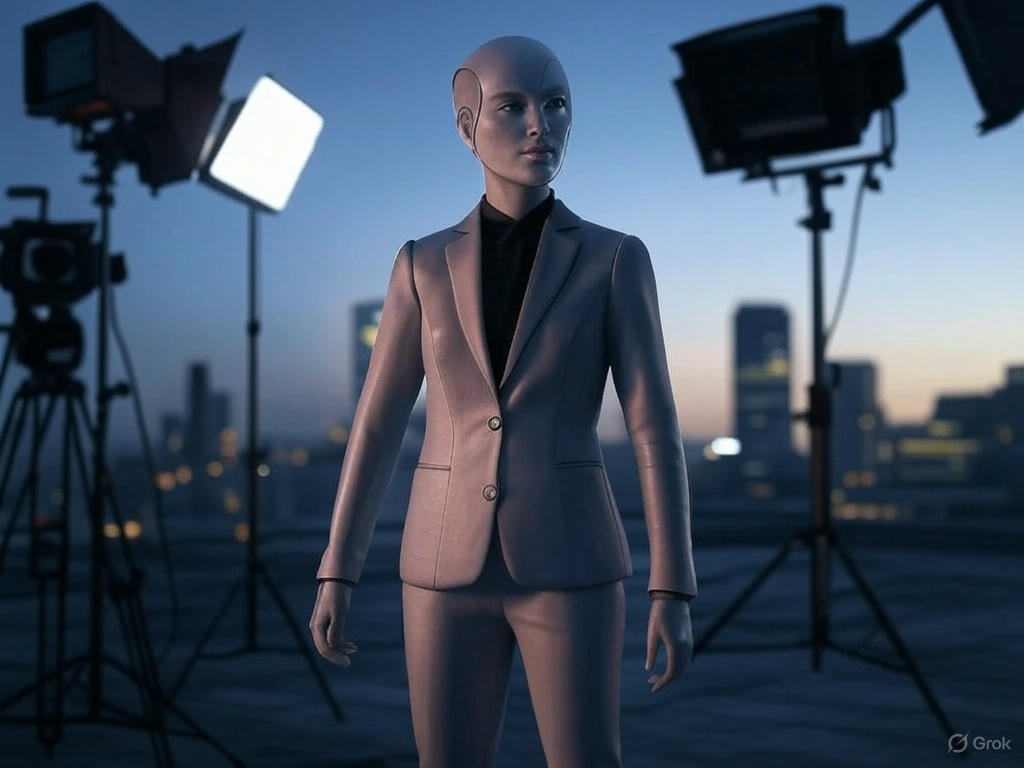Artificial intelligence (AI) has redefined the way we create content, and video production is no exception. Among the many tools available, Synthesia stands out as a leading platform that allows users to craft professional-grade videos using AI technology. Whether you’re a marketer, educator, business owner, or content creator, Synthesia offers an intuitive and efficient way to produce videos without the need for cameras, actors, or complex editing software. This 1000-word article explores what Synthesia is, how it leverages AI to create videos, and provides a detailed step-by-step guide on how to use it.
What is Synthesia?
Synthesia is an AI-powered video creation platform launched in 2017 that enables users to generate videos from text inputs. It uses advanced machine learning, natural language processing (NLP), and computer vision to create lifelike digital avatars that “speak” your script in a natural, human-like voice. With support for over 140 languages and a variety of customizable templates, Synthesia has become a go-to solution for businesses, educators, and individuals looking to produce high-quality videos quickly and affordably.
Unlike traditional video production, which requires filming equipment, editing skills, and significant time investment, Synthesia automates the process. You simply input a script, choose an avatar, and let the AI handle the rest—making it ideal for training videos, marketing campaigns, tutorials, and more. But how exactly does it work, and how can you use it? Let’s dive into the details.
How Synthesia Uses AI for Video Creation
Synthesia’s core technology revolves around two main components: AI avatars and text-to-speech synthesis. The avatars are digital characters designed to mimic human expressions and lip movements, synced perfectly with the audio generated from your script. The text-to-speech engine, powered by AI, produces natural-sounding voices in various accents and tones, eliminating the need for voice actors. Additionally, Synthesia’s AI can integrate visuals, backgrounds, and transitions to create a polished final product.
This combination of technologies allows Synthesia to streamline video production into a few simple steps, making it accessible even to those with no prior experience. Below, we’ll walk through how to use Synthesia to create your own video, from signing up to downloading the finished product.
Step-by-Step Guide to Using Synthesia
Here’s a detailed breakdown of how to create a video with Synthesia, based on its current features as of March 23, 2025:
Step 1: Sign Up and Access the Platform
To get started, visit the Synthesia website (synthesia.io) and sign up for an account. You can begin with a free trial to explore the platform, though it comes with limitations such as watermarked videos and restricted features. For full access, consider subscribing to a paid plan—starting at around $22 per month—depending on your needs (e.g., video length, number of projects).
Once registered, log in to your dashboard. The interface is clean and user-friendly, with options to create a new video, browse templates, or explore tutorials.
Step 2: Create a New Video
From the dashboard, click “New Video” to start your project. Synthesia offers two main options:
- Start from Scratch: Build a video entirely from your own script and preferences.
- Use a Template: Choose from a library of pre-designed templates tailored for specific purposes like sales pitches, onboarding, or announcements.
For this guide, let’s assume you’re starting from scratch to fully customize your video.
Step 3: Input Your Script
After selecting “Start from Scratch,” you’ll be taken to the script editor. Here, type or paste the text you want the AI avatar to say. For example, if you’re creating a product promo, your script might be: “Introducing the latest smartphone—sleek, powerful, and affordable. Get yours today!”
You can break the script into scenes by adding section breaks (e.g., pressing “Enter” twice), which helps structure the video. Keep the text concise and clear, as overly complex sentences may affect the avatar’s delivery.
Step 4: Choose an AI Avatar
Next, select your avatar—the digital presenter who will “perform” your script. Synthesia offers a diverse range of avatars differing in gender, ethnicity, and attire (e.g., casual, business formal). You can preview each avatar to see how they look and sound. Some plans allow you to create a custom avatar based on real footage of yourself or a colleague, though this requires additional setup and cost.
Once you’ve picked an avatar, assign it to your script or specific scenes. You can even use multiple avatars for a conversational effect.
Step 5: Customize the Voice
Synthesia’s AI voices are highly realistic, with options for different languages, accents, and tones (e.g., friendly, professional, enthusiastic). Choose a voice that matches your video’s purpose. For instance, a British female voice might suit a formal corporate video, while an upbeat American male voice could work for a casual ad. Preview the voice with your script to ensure it fits.
Step 6: Add Visuals and Backgrounds
While the avatar is the star, Synthesia lets you enhance the video with visuals. You can:
- Select a Background: Choose from preset options like an office, studio, or abstract design, or upload your own image/video.
- Insert Media: Add images, logos, or short video clips to appear alongside the avatar (e.g., a product photo during a sales pitch).
- Apply Text Overlays: Include on-screen text like titles, subtitles, or calls-to-action.
Use the timeline editor to position these elements precisely, ensuring they align with the spoken script.
Step 7: Fine-Tune and Preview
Before finalizing, preview your video to check the avatar’s lip-sync, voice pacing, and visual flow. Synthesia’s AI does most of the heavy lifting, but you can tweak settings like avatar gestures, zoom levels, or transition effects. If something feels off (e.g., pronunciation), adjust the script phonetically or contact support for assistance.
Step 8: Generate and Download
Once satisfied, click “Generate” to render the video. Processing time varies based on length and complexity—typically a few minutes. After it’s ready, download the video in MP4 format or share it directly via a link. Paid users can export in high resolution (up to 1080p) without watermarks.
Tips for Success with Synthesia
- Keep Scripts Natural: Write as you’d speak to avoid robotic delivery.
- Test Multiple Avatars: Experiment to find the best fit for your audience.
- Use Branding: Incorporate your logo and colors for a professional touch.
- Start Small: Begin with a short video (1-2 minutes) to master the platform.
Benefits of Using Synthesia
Synthesia saves time and money compared to traditional methods, offers scalability (e.g., creating videos in multiple languages), and requires no technical expertise. It’s perfect for rapid content production without sacrificing quality.
Limitations to Consider
While powerful, Synthesia isn’t flawless. The avatars, though realistic, lack the emotional depth of real actors. Customization options are somewhat limited in lower-tier plans, and complex animations may require additional tools.
Conclusion
Synthesia exemplifies how artificial intelligence can transform video creation into a simple, accessible process. By following the steps outlined—signing up, scripting, choosing avatars, and customizing—you can produce engaging videos in minutes. Whether for business, education, or personal projects, Synthesia empowers anyone to harness AI for storytelling. As AI technology evolves, platforms like Synthesia will only become more versatile, making now the perfect time to explore this innovative tool.



![30 AI Art Platforms That Support Commercial Licensing [2025] 30 AI Art Platforms That Support Commercial Licensing [2025]](https://www.vctlo.com/wp-content/uploads/2025/08/30-AI-Art-Platforms-That-Support-Commercial-Licensing-2025-150x150.jpg)